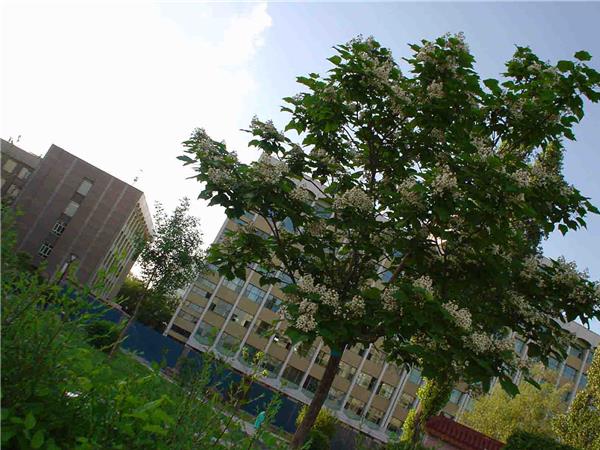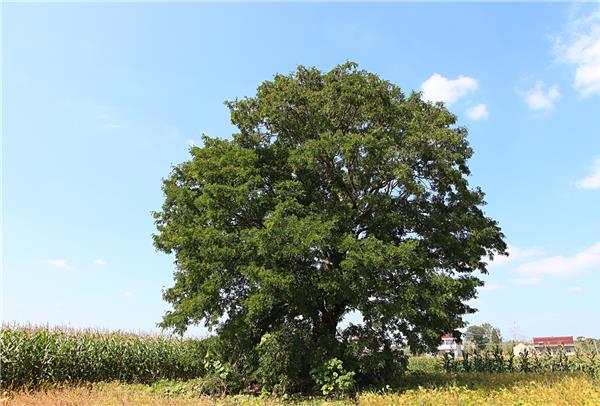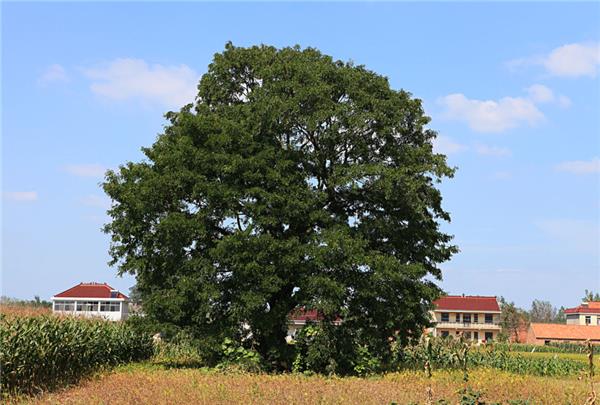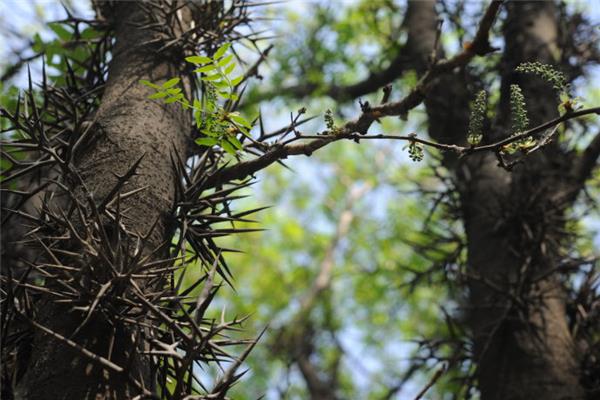How to plant and maintain Gleditsia trees and why they withered
The planting of Gleditsia trees can be carried out by sowing, it is a fast-growing tree species, planting and maintenance is relatively simple, but there are many matters needing attention, it needs to be rigorous and careful.

Planting techniques of Gleditsia sinensis
Seed collection: select 30-100-year-old mother trees with straight trunk, fast growth, good development and full seeds, and collect seeds in the middle and last ten days of October. The harvested fruit should be spread out and exposed to the sun, smash or crush the pod after drying, peel off the peel, select by the wind, that is, get the clean seed, and put the seed in a bag after drying.
Raising seedlings: the nursery land should choose places with fertile soil and convenient irrigation for meticulous soil preparation. Every 667m2, organic fertilizer 3000~5000kg should be applied to build a flat bed or a high bed. Using strip sowing, strip spacing 20~25cm, sowing 10-15 seeds per meter long sowing ditch, covering soil 3-4cm thick after sowing, and often keeping the soil moist. When the height of seedlings is about 10cm, the distance between seedlings and fixed seedlings is 10-15cm, and the height of seedlings in the same year can reach 50~100cm. If the 2-year-old seedlings were cultivated, the seedlings were transferred to another bed according to the row spacing of 0.5m × 0.5m after the seedlings were defoliated at the end of autumn.
Afforestation: the artificial afforestation of Gleditsia sinensis is carried out by means of direct seeding afforestation, seedling planting, root tiller afforestation and so on. Forest land with less than 9000 trees (clumps) per hectare should be replanted or newly built.

Maintenance of Gleditsia sinensis
Fertilization: timely application of postharvest fertilizer is beneficial to the continuous yield increase of the orchard in the coming year. Due to the impact of climate this year, the potential of some trees is poor, such as not timely fertilization, root nutrition can not keep up with, seriously affecting fruit trees overwintering and spring rooting. Because the period from harvest to defoliation is the storage period of nitrogen nutrition, the nitrogen content in this period plays an important role in the differentiation of high-quality flower buds and the ability to create high yield in the following year. Therefore, it is necessary to seize the time, it is appropriate to early, adhere to the quality of good fertilizer. Encourage deep application of ditches to improve fertilizer efficiency. If it is sprinkled on the ground, it is necessary to keep an eye on the weather and catch it before and after the rain. The main fertilizer is carbon and ammonia, and the amount of fertilizer is 1-2 jin per plant according to local conditions.
Spraying: in order to protect leaves and make them have strong photosynthesis, it is beneficial to nutrient accumulation. Therefore, according to the dynamics of the occurrence of diseases and insect pests, strengthen the examination and use good medicine in time. Autumn is the peak period for red-necked longicorn beetles to eat and harm the branches of fruit trees. At the same time, the second insecticidal double pesticides were applied to the trunk of fruit trees in order to completely eliminate the harm of longicorn beetles.
Pruning: the key point of autumn pruning is to remove dead and dead branches, cut off disease and insect branches, overlapping branches and lower thin and weak branches, and remove redundant erect branches and some long branches. It can not only lay a good foundation for winter shears, but also ventilation and light, reduce nutrient consumption, promote flower bud differentiation, be strong and full, and create conditions for more fruit and high yield next year.

The cause of wilting of Gleditsia sinensis
The main results are as follows: 1. the root growth activity is poor. The growth of branches and leaves of trees is not as luxuriant as in previous years, probably because the tree is older, the ability of absorbing water and nutrients is poor, and the soil structure of the growing area is not loose, and the ability of aeration, water and fertilizer conservation is poor, resulting in poor root growth activity. Loose soil tending can be carried out to enhance the ventilation of the soil, and the depth of loosening soil should not hurt the root system. In addition, according to the growth of trees, timely watering to meet the requirements of root water.
2. Soil fertility is not enough, so strengthen the management of soil and fertilizer.
3. Harm of diseases and insect pests. 2000 times of wettable carbendazim powder and 1000 times of omethoate EC can be used to control diseases that harm tree leaves and 20% wettable carbendazim powder. For pests that harm the branches of trees, cotton balls can be used to soak 1000 times of dichlorvos EC to plug the hole, or drill holes oblique 45 °in the part of the pest, with a hole diameter of 6-8 mm and a depth of 6 cm, and insert them directly with tree insecticides. or cut off the damaged branches and burn them.
4. Cut off the inner bore branches, disease and insect branches and withered branches.
5. Growth environment factors. If the air pollution where the trees grow is serious, once it rains to form acid rain, it can make the trees blossom but not bear fruit, and even cause the trees to wither.

In addition, in the process of planting and maintaining the acacia tree, we have to loosen the soil for it in time, keep it moist, and loosen the soil after emergence, otherwise it may cause harm such as root rot of the acacia tree, making it unable to grow healthily.
Related
- Wuhan Hospital Iron Tree Blooming Result Was Instantly Frightened by the Gardener Master
- Which variety of camellia is the most fragrant and best? Which one do you like best?
- What is the small blue coat, the breeding methods and matters needing attention of the succulent plant
- Dormancy time and maintenance management of succulent plants during dormancy
- Minas succulent how to raise, Minas succulent plant pictures
- What are the varieties of winter succulent plants
- How to raise succulent plants in twelve rolls? let's take a look at some experience of breeding twelve rolls.
- Attention should be paid to water control for succulent plants during dormant period (winter and summer)
- Watering experience of twelve rolls of succulent plants
- Techniques for fertilizing succulent plants. An article will let you know how to fertilize succulent plants.



